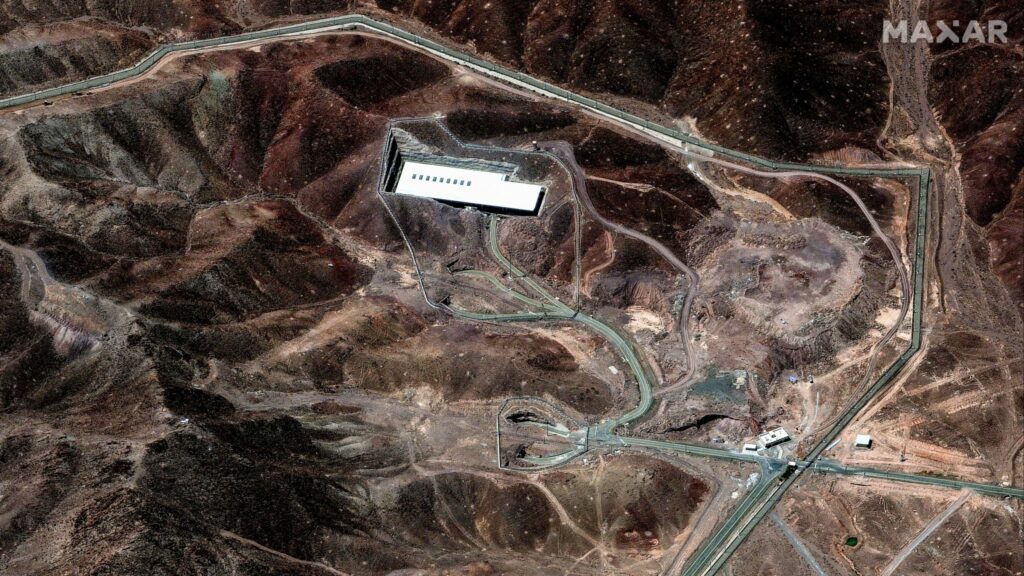B2 Bombers Hit Deep Sites, Iran Declares War, Global Security on Edge
In a dramatic escalation that has rattled West Asia and beyond, the United States has launched direct airstrikes on Iran’s three most fortified nuclear facilities — Fordow, Natanz, and Isfahan. These locations form the backbone of Iran’s uranium enrichment and weapons-grade capability. The strikes, reportedly authorized by former President Donald Trump and executed using B2 stealth bombers armed with GBU-57 “bunker buster” bombs, mark a historic and unprecedented moment in modern warfare.
BREAKING: The U.S. attacked three Iranian nuclear sites, Trump says, joining Israeli air campaign as Tehran promises to retaliate. https://t.co/25LaD7sxBg
— The Associated Press (@AP) June 22, 2025
These facilities were not just symbolic—they were central to Iran’s ambitions of becoming a nuclear-armed state. The precision strikes targeted uranium enrichment halls buried deep beneath mountains, where 60% enriched uranium was nearing weapons-grade status. Following the strike, Iran has officially declared war, calling all US forces in the region “legitimate targets.” The region now stands on the brink of a broader and more dangerous conflict.
Why the US Targeted Fordow, Natanz, and Isfahan Nuclear Facilities
The three sites targeted by the US were not randomly selected. They represent Iran’s most secretive and advanced nuclear infrastructure:
- Fordow: A deeply buried facility built beneath a mountain, invisible to satellites and immune to conventional airstrikes. This site was enriching uranium up to 60%—a short leap away from weapons-grade 90%. Due to its depth (250–300 feet underground), it could only be penetrated using the GBU-57 Massive Ordnance Penetrator bombs.
- Natanz: Iran’s largest and most public enrichment facility, long suspected by Western intelligence of being central to its clandestine weapons program. Although Israel had previously struck parts of Natanz, the damage was limited. The US strikes were far more potent.
- Isfahan: A critical site for uranium conversion and research, also hosting missile-related development facilities. This location ties Iran’s nuclear ambitions with its expanding missile delivery systems.
Only the US Air Force, with its long-range stealth B2 bombers, had the capability to deliver such deep precision strikes, evading radar detection and delivering payloads strong enough to destroy fortified underground bunkers.
Iran Declares War: How the Axis of Resistance and Regime Stability Are Crumbling
The Iranian response was swift and alarming. Tehran announced that all US personnel in the region are now legitimate targets, effectively declaring war. The Islamic Revolutionary Guard Corps (IRGC) has been mobilized, and Iran’s remaining missile systems are reportedly being prepared for retaliation.
However, Iran’s response capability is rapidly crumbling:
- Over 50% of Iran’s missile launchers have been destroyed in previous Israeli and US sorties over 10 days of sustained operations.
- Proxy forces like Hezbollah, Hamas, Houthis, and Syrian militia groups have either been neutralized or severely weakened. Their capacity to retaliate in a meaningful way is minimal.
- Analysts believe that while Iran may still possess missiles, US and Israeli air defense systems (like Iron Dome and Patriot batteries across Gulf bases) significantly reduce the threat of mass damage.
Experts, including diplomats and intelligence officers, are now openly discussing the likelihood of regime change in Iran—either forced or triggered by internal collapse. This sentiment is echoed by both Israeli leadership and American military advisors, who argue that this may be the best opportunity in decades to dismantle the current clerical regime.
This is no longer just about nuclear sites or uranium enrichment. The US–Israel alliance has sent a thunderous message: nuclear ambiguity will not be tolerated. Iran’s military infrastructure lies in ruins, and its proxies stand silenced. Yet, the risk of asymmetric retaliation through sleeper cells, global terrorism, or rogue actors remains high. This strike may be remembered as a defining moment—one that changed the balance of power in the Middle East and potentially paved the way for a new political order in Tehran.





















